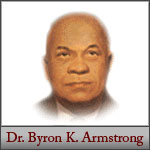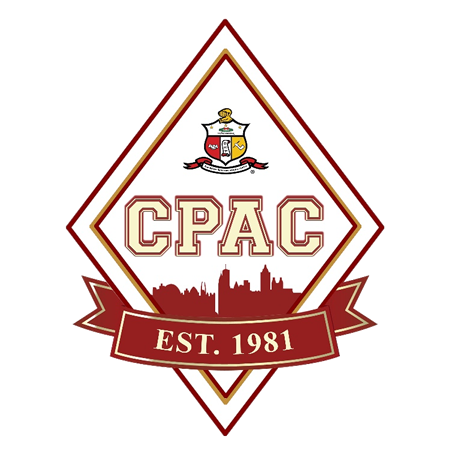A Brief History of Kappa Alpha Psi Fraternity, Inc.
Kappa Alpha Psi, a college Fraternity, now comprised of functioning Undergraduate and Alumni Chapters on major campuses and in cities throughout the country, is the crystallization of a dream. It is the beautiful realization of a vision shared commonly by the late Revered Founders Elder Watson Diggs, “The Dreamer”; John Milton Lee; Byron K. Armstrong; Guy Levis Grant; Ezra D. Alexander; Henry T. Asher; Marcus P. Blakemore; Paul W. Caine; Edward G. Irvin and George W. Edmonds.
Kappa Alpha Psi plaque at Indiana University It was the vision of these astute men that enabled them in the school year 1910 – 11, more specifically the night of January 5, 1911, on the campus of Indiana University at Bloomington, Indiana, to sow the seed of a fraternal tree whose fruit is available to, and now enjoyed by, college men everywhere, regardless of their color, religion or national origin. It is a fact of which KAPPA ALPHA PSI is justly proud that the Constitution has never contained any clause which either excluded or suggested the exclusion of a man from membership merely because of his color, creed, or national origin. The Constitution of KAPPA ALPHA PSI is predicated upon, and dedicated to, the principles of achievement through a truly democratic Fraternity.Chartered and incorporated originally under the laws of the State of Indiana as Kappa Alpha Nu on May 15, 1911, the name was changed to KAPPA ALPHA PSI on a resolution offered and adopted at the Grand Chapter in December 1914. This change became effective April 15, 1915, on a proclamation by the then Grand Polemarch, Elder Watson Diggs. Thus, the name acquired a distinctive Greek letter symbol and KAPPA ALPHA PSI thereby became a Greek letter Fraternity in every sense of the designation.
From its inception, and for the next six years, Brother Diggs served as the Grand Polemarch of KAPPA ALPHA PSI Fraternity. Through his leadership and indefatigable application, augmented by the efforts of B.K. Armstrong, and John M. Lee, who comprised the remainder of the original Grand Board of Directors, the infant Fraternity was guided through the most perilous years of its life. Accordingly, much of the credit for the organization’s survival through this period is shared by these three men.
From its inception, every endeavor was directed toward establishing the Fraternity upon a strong foundation before embarking on plans of expansion. By the end of the first year, working together, Diggs and Armstrong had completed the ritual and had commenced work on the coat of arms. Work on the latter was completed during the following summer by Diggs, Armstrong and Lee while they were pursuing employment at a hotel in Fort Wayne , Indiana .
In selecting a suitable motto, Diggs, Armstrong and Lee solicited the aid of a Professor of Greek Art at Indiana Technical College at Fort Wayne , Indiana . Having adopted a motto which mutually suited them, they carried a sketch of the coat of arms to a commercial engraver in Fort Wayne , from which he made the first metal plate.
For years, in order to safeguard the ritualistic secrets of the Fraternity, Diggs laboriously typed and bound the rituals. It was not until he moved to Indianapolis , Indiana , where he met an old German printer in whom he had confidence, that he entrusted the esoteric materials of the Fraternity to a commercial printer.
721 Hunter Avenue. The first fraternity house. In the spring of 1912 Diggs wrote in a little blue examination book the first Constitution, which was adopted in 1920 with but a few revisions. This edition remained in use until 1926 when it was supplanted by the codified edition jointly written by Diggs, J. Ernest Wilkins, and W. Ellis Stewart. In 1957 the Constitution again underwent major revision. Now substantially established and provided with a Constitution, Ritual, coat of arms, motto, and guiding hand in a dynamic Grand Chapter, the Fraternity was ready for expansion. In the summer of 1912 Diggs visited the University of Illinois at Urbana , Illinois , where he met Earl B. Dickerson, President of the Old “Illini Club.” This club constituted the nucleus of the University of Illinois Chapter , the Beta, which was chartered on February 8, 1913. Gamma Chapter (later changed to Indianapolis Alumni Chapter) was established on December 29, 1913, followed by the establishment of Delta Chapter at the University of Iowa , on March 7, 1914. The latter was subsequently changed to Gamma Chapter, and the designation of Delta assigned to the Wilberforce University Chapter at Wilberforce , Ohio . Epsilon Chapter, Lincoln University , Pennsylvania , was established December 4, 1915, as the first chapter in the East. Elder W. Diggs journeyed from Indiana to give this chapter his personal and official installation, recognition and blessing.
Thus ended the infancy of KAPPA ALPHA PSI, whereupon the Fraternity embarked upon an era of expansion. Except for the years of World War I and II, when several Grand Chapter meetings were suspended, KAPPA ALPHA PSI has grown and prevailed with unabated impetus.
KAPPA ALPHA PSI Fraternity, relatively early, envisioned the modified attitudes of college administrators and administrations regarding certain frivolous activities previously identified with Greek letter organizations; and it initiated appropriate changes. Among the early changes brought about was the banning of paddling and other forms of physical abuse, and the introduction of constructive endeavors during pledgeship and probation. To date, KAPPA ALPHA PSI Fraternity is organizationally and administratively mature. It moves steadily toward a tomorrow of promise, productivity and influence.
Taken from:“A SHORT CHRONICLE OF KAPPA ALPHA PSI FRATERNITY”










Fraternity Founders
In 1911, ten men of vision decided that their fraternity would be more than simply another social organization. It would be the only Greek letter organization committed to a fundamental purpose of Achievement.
Founder Elder Watson Diggs, was quiet, polished, scholarly, a prolific writer and commonly referred to as ‘the Father of Kappa’. He was born in Hopkinsville, Christian County, Kentucky, on December 23, 1883, and was the eldest son of three children. Diggs and his brother (William Ellis) and sister (Effie) were reared by their mother, Cornelia.He received a one-room school education in Louisville, Kentucky, where he helped teach the younger children. Following graduation from Indiana State Normal School in the spring of 1908, Diggs enrolled at Howard University in 1909. While a student there, he developed a friendship with fellow Hoosier, Byron K. Armstrong.
During the summer of that year, Byron Armstrong visited his cousin, Irven Armstrong at Indiana University. Bryon was so impressed that he persuaded Diggs to enroll with him in the fall. Diggs enrolled at Indiana University in the fall of 1910 and was the first African-American to graduate with an A.B. degree from Indiana University’s School of Education in 1916. He subsequently earned his Master’s degree of Education from Howard University in 1944.
Diggs was an educator who held teaching positions and served as principal at public schools throughout Indiana. Diggs was married on three occasions (Clara Bell Smith, Elizabeth Byrd and Lyla P. Roberts). Clara Bell and Lyla were both teachers and Diggs assumed Clara Bell’s teaching responsibilities once they became married since female teachers were not permitted to teach in the state of Indiana at that time. Clara Bell and Elizabeth preceded Diggs in death and Lyla died less than 30 days after Diggs passed.
When the U.S. made its declaration in World War I against Germany, Diggs resigned as principal and entered the nation’s first Negroes Officers Training Camp at Fort Des Moines, Iowa and was commissioned a First Lieutenant. After serving in Europe with the 368th Infantry, he rose to the rank of Captain in the Army Reserve Officers Training Corps. Diggs also was a past commander of the American Legion. Subsequent to the war, Diggs was instrumental in having the Indiana constitution amended to permit Negro enlistment in the Indiana National Guard.
Diggs was an active member of the First Baptist Church of North Indianapolis; a past commander of the Edward S. Gaillard Post of the American Legion; a member of the History Committee of the Indianapolis Public Schools; a member of the Leadership Training Committee, Boy Scouts of America; a worker in the YMCA; and during the late war served on the Executive Committee of the USO. Diggs was also a member of Central Lodge No. 1, Indianapolis, Indiana under the auspices of the Most Worshipful Prince Hall Grand Lodge of Indiana.
Based on the hostile attitude and circumstances facing Blacks at Indiana University, Diggs decided to establish a fraternity on campus to give African-Americans support and sanctuary based on high Christian ideals and the purpose of achievement. Diggs assisted Byron & Irven Armstrong in designing the Coat of Arms, assumed responsibility for preparing the initiation ceremonial forms, completed the fraternity’s constitution and took a course in Greek heraldry and mythology to ensure the fraternity was rooted in authenticity. He was one of two Founders who pawned his watch to pay for the Fraternity’s incorporation fee.
Diggs wrote the lyrics to the Kappa Hymn. Additionally, he established the Kappa Alpha Nu Journal, the first periodical of any national Black college fraternity. He served as Grand Polemarch for the first six years of the fraternity’s existence. He also served as a Grand Board Member and as Grand Historian. He also established several of the initial undergraduate chapters in addition to the Indianapolis (IN) Alumni Chapter. Diggs was awarded the first Past Grand Polemarch’s medal and the first Laurel Wreath. He also assisted in writing The 1928 Handbook of Kappa Alpha Psi.
The Elder Watson Diggs Award, the second highest award available to celebrate a member’s achievements or service to the fraternity is dedicated in his name. The Elder W. Diggs Memorial at Indiana University was constructed in his honor in 1962. Diggs died November 8, 1947. Following his death, School #42 was named in his honor where he served as principal for 26 years. Diggs is laid to rest at Crown Hill Cemetery, Indianapolis, Indiana.

